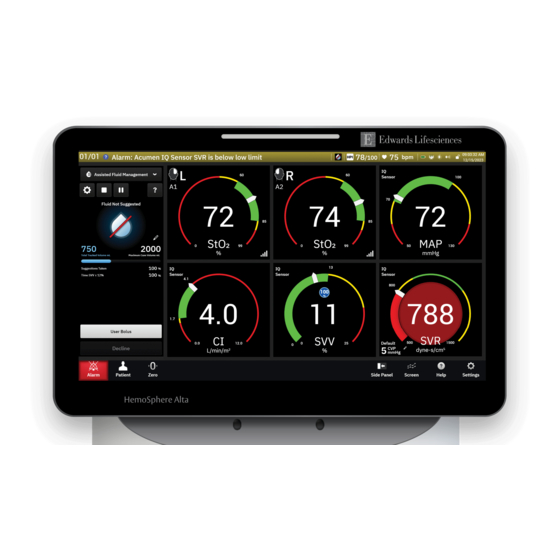
Edwards HemoSphere Alta Advanced Manuals
Manuals and User Guides for Edwards HemoSphere Alta Advanced. We have 1 Edwards HemoSphere Alta Advanced manual available for free PDF download: Operator's Manual
Edwards HemoSphere Alta Advanced Operator's Manual (448 pages)
Monitoring Platform
Brand: Edwards
|
Category: Measuring Instruments
|
Size: 22 MB
Table of Contents
-
Monitor Rear79
-
Split Screen99
-
Cockpit Screen103
-
Event Scrolling110
-
Status Bar122
-
Patient Data132
-
New Patient132
-
Demo Mode135
-
Set Alarm Volume141
-
Set Targets141
-
Export Data147
-
Monitoring Data148
-
Probe Selection161
-
Intended Use242
-
Study Design284
-
Study Results288
-
Study Summary292
-
Troubleshooting353
-
On Screen Help353
-
Accessories List408
-
Roll Stand409
-
Alarm Priorities422
-
Battery Storage432
-
F.9 Warranty433
Advertisement
